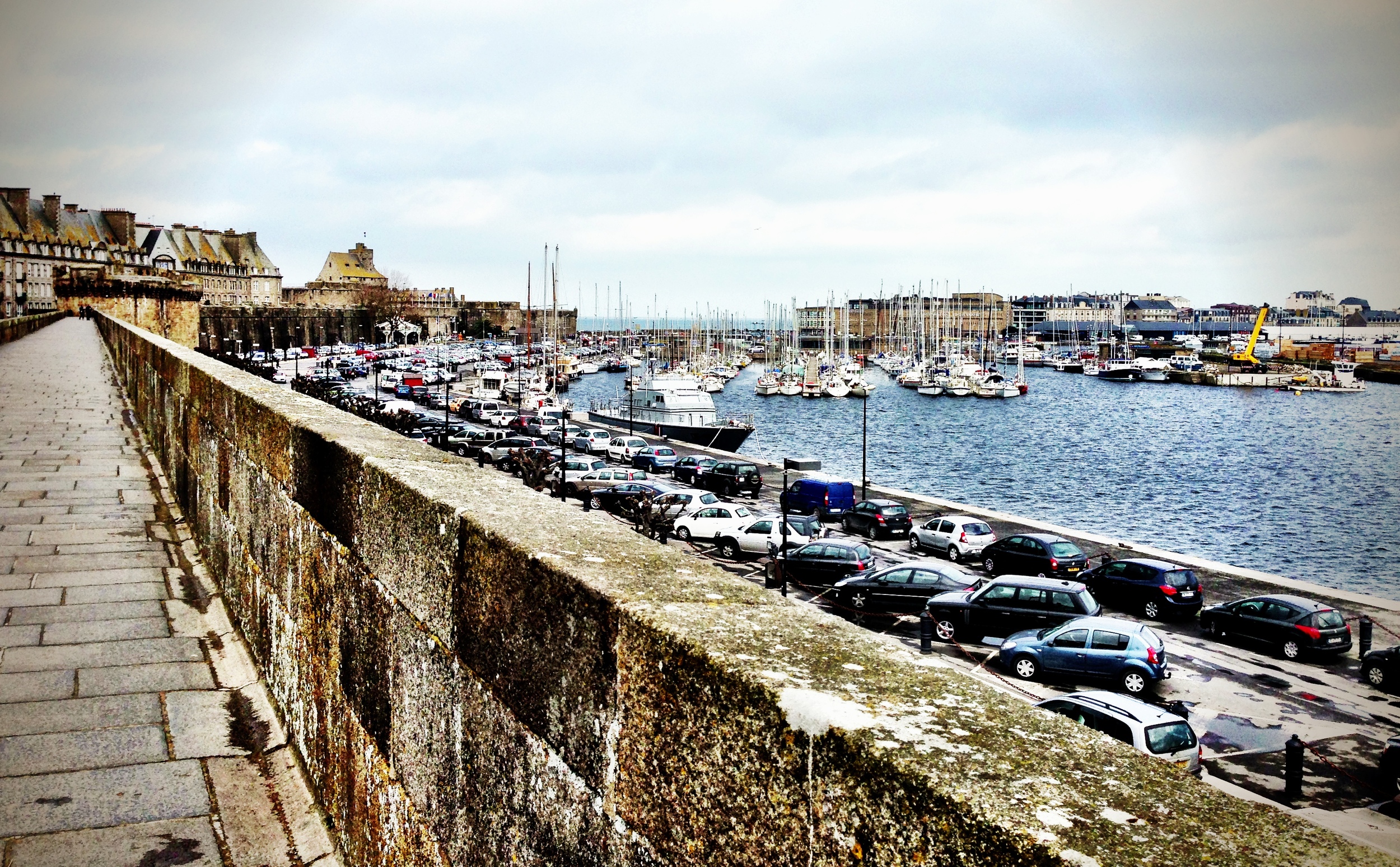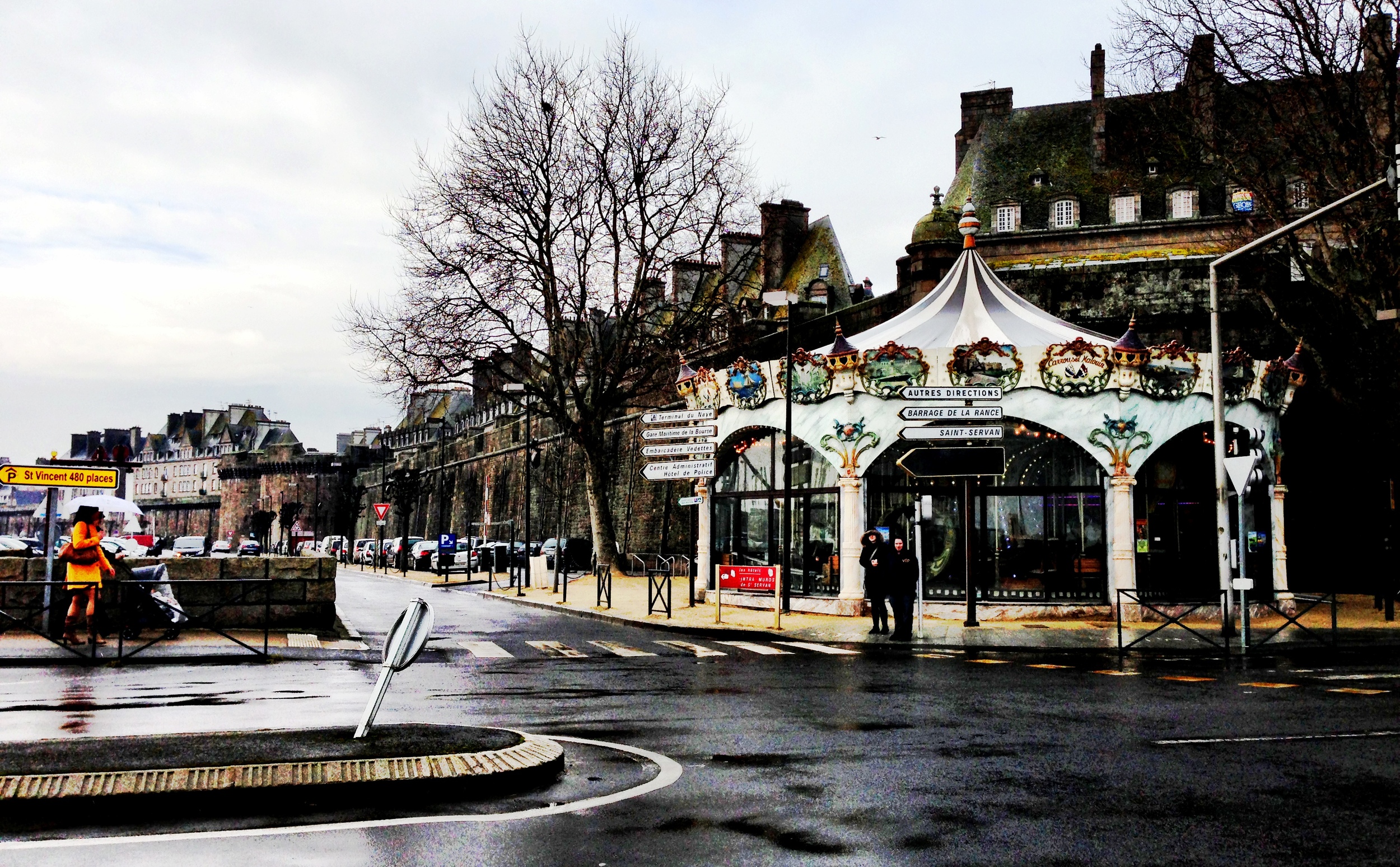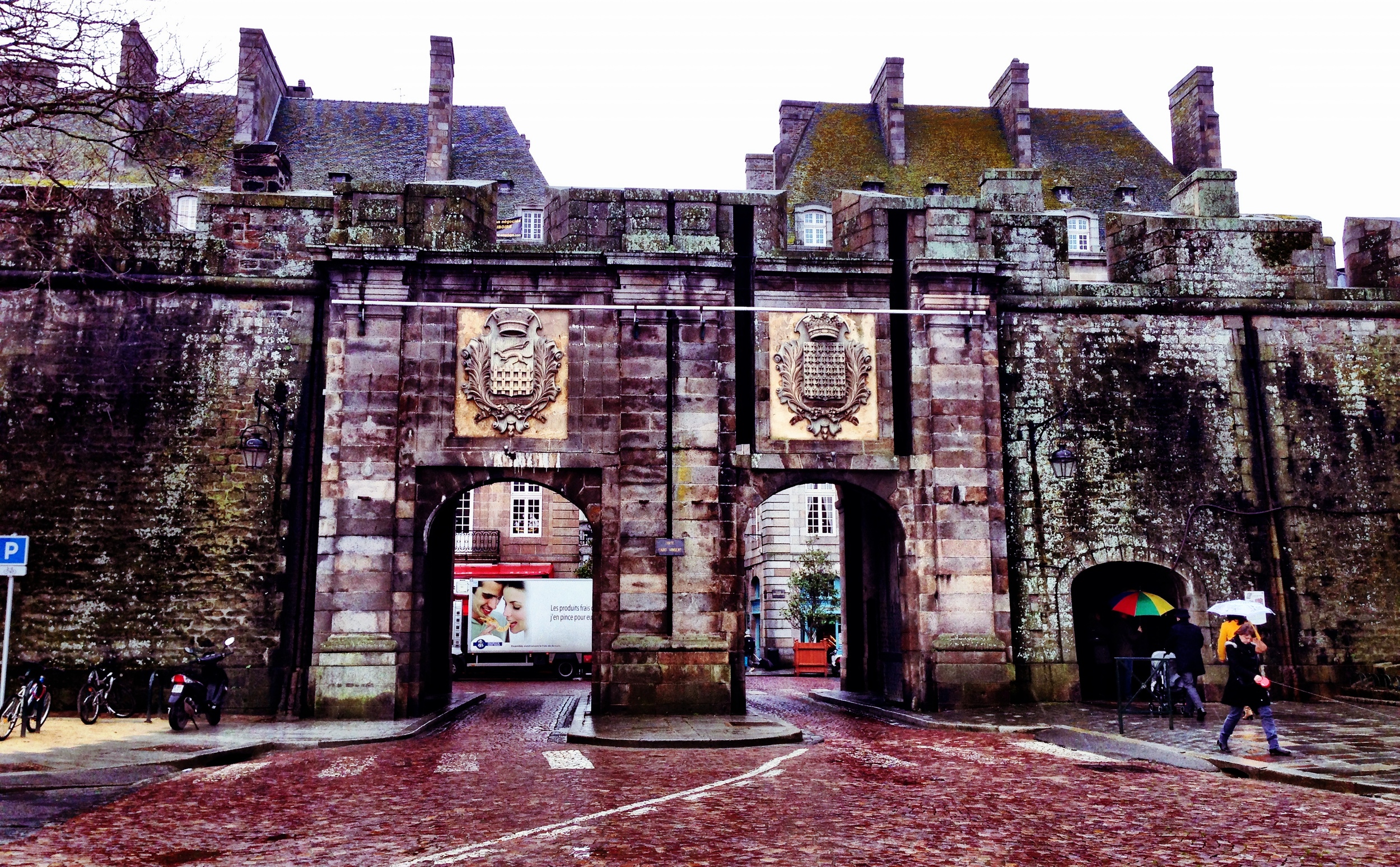Back in January I had the pleasure of meeting my uncle's friend Pascal, who kindly extended an open invitation to visit him and his family in Fontainebleau. If I've learned one thing about France over the last 9 months, it's that the more I travel outside of Paris the less I like the city and its denizens. So last week I called him up and we arranged a day for me to come round for lunch and visit the city's main attraction - the château.
When I arrived yesterday morning Pascal was already waiting for me at the station, and even though it hadn't been that long since we'd last seen each other, it still made me smile to see how enthusiastic he was about everything.
"There's a nice village I want to show you!" he said as soon as I had buckled my seatbelt.
Me with owner Steve.
And off we went to nearby Samois, a small town right on the Seine. As we wound through the narrow streets he occasionally slowed to point out particular buildings and passageways. It was charming and rustic. But we didn't actually stop and get out of the car until we approached the riverbank and Pascal spotted a friend - a New Zealander named Steve who owns a B&B on a boat. Steve seemed pleased to have company so he invited us in for a little tour. The main level of consists of a large deck with jacuzzi, richly furnished lounge and bar, and an enviable kitchen. Below were the 4 guest rooms, also pretty lavishly decked out (pun intended?), and pictures of celebrities who had stayed there.
"Recognize this guy?" Steve asked me, pointing to an autographed photo. The face looked vaguely familiar, but was obscured by a bushy beard.
It was Robert De Niro.
Steve quizzed me on another, which this time I recognized - Debbie Reynolds, because Singin' in the Rain is my favorite movie.
After the tour we hopped back in the car and drove into the forest that surrounds the city of Fontainebleau (for a 10-mile radius all around, according to Pascal). Standing on that rocky outcropping I immediately felt a pang because it reminded me of home; of the trees that give Washington its nickname, and of camping with my family during summer vacation. With the wind you could hear the distant sounds of cars speeding down the highway, but engulfed in that pristine panorama of nature it seemed but a whisper.
I wish we could have stayed longer but by then it was almost noon, and Pascal's wife Sophie had prepared lunch - a delicious beef stew - for all of us at their home. And because Sophie is half Vietnamese we had it with rice. Yum. More things I miss about home...
Pascal dropped me off at the château in the early afternoon, explaining how to catch the bus back to the train station and apologizing profusely for not being able to stay and show me around (he had previously agreed to help a friend out with his new property). But, really, he and Sophie had already done more for me than they knew. Whatever you may have heard about French hospitality probably only applies to Parisians; as much as I adore the couple we really are just acquaintances, and yet they welcomed me with open arms. I hope I'll have time to pay them another visit before I leave France for good, but if not at least I have this lovely day to remember them by.
Sophie had warned me that Fontainebleau would seem "small" in comparison to Versailles, but in some ways it made for a more positive visiting experience. Yes, the rooms aren't as big as there are less of them than in its more famous counterpart, but Fontainebleau is every bit as opulent. It's history is more intricate as well, dating back to the Middle Ages, and since many monarchs who resided there did their own renovations the result is a hodgepodge of architectural and artistic styles. And I'm not just talking about interior design; even from the outside the palace is very asymmetrical. Because of my timing I got caught between a couple of tour groups, but in general Fontainebleau has a lot less visitors. It was still easy to take photos without getting randos in the frame, whereas at Versailles I didn't even bother to try.
If you go: The train schedules on the SNCF website are misleading. At the time of writing, trains heading to Montargis (Fontainebleau will be the third stop) depart from Gare de Lyon 19 minutes past the hour. Trains from Fontainebleau-Avon depart every 30 minutes on the hour back to Paris. The journey is approximately 40 minutes each way.





































